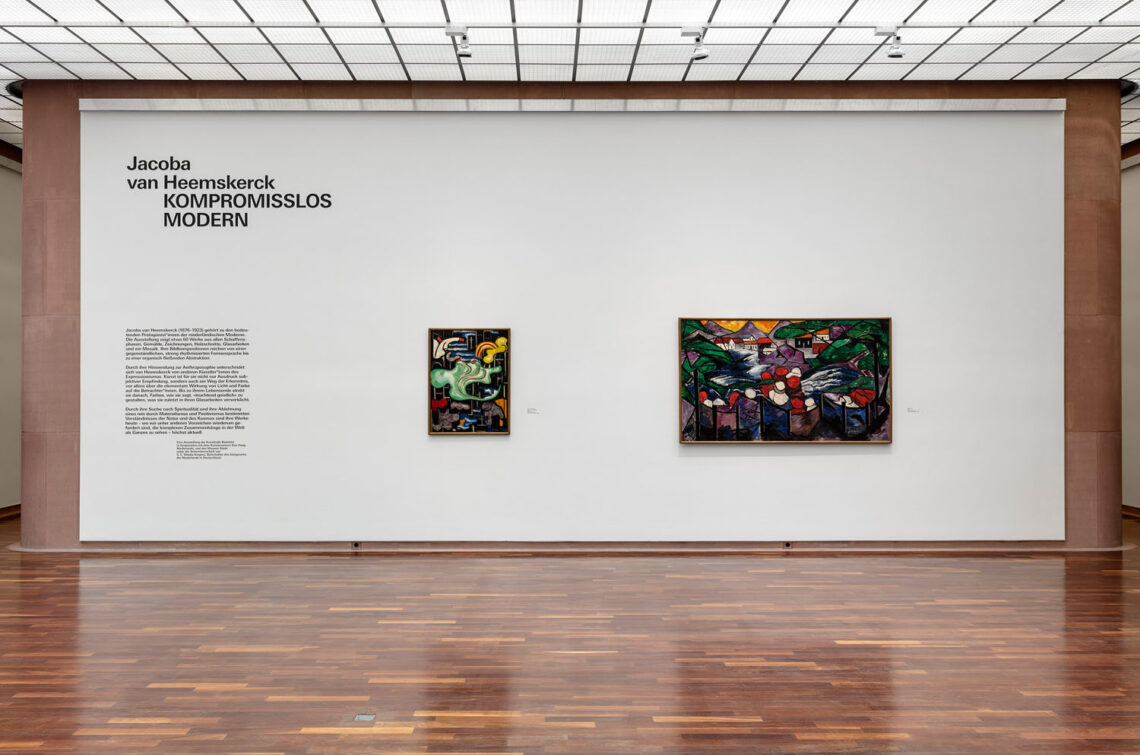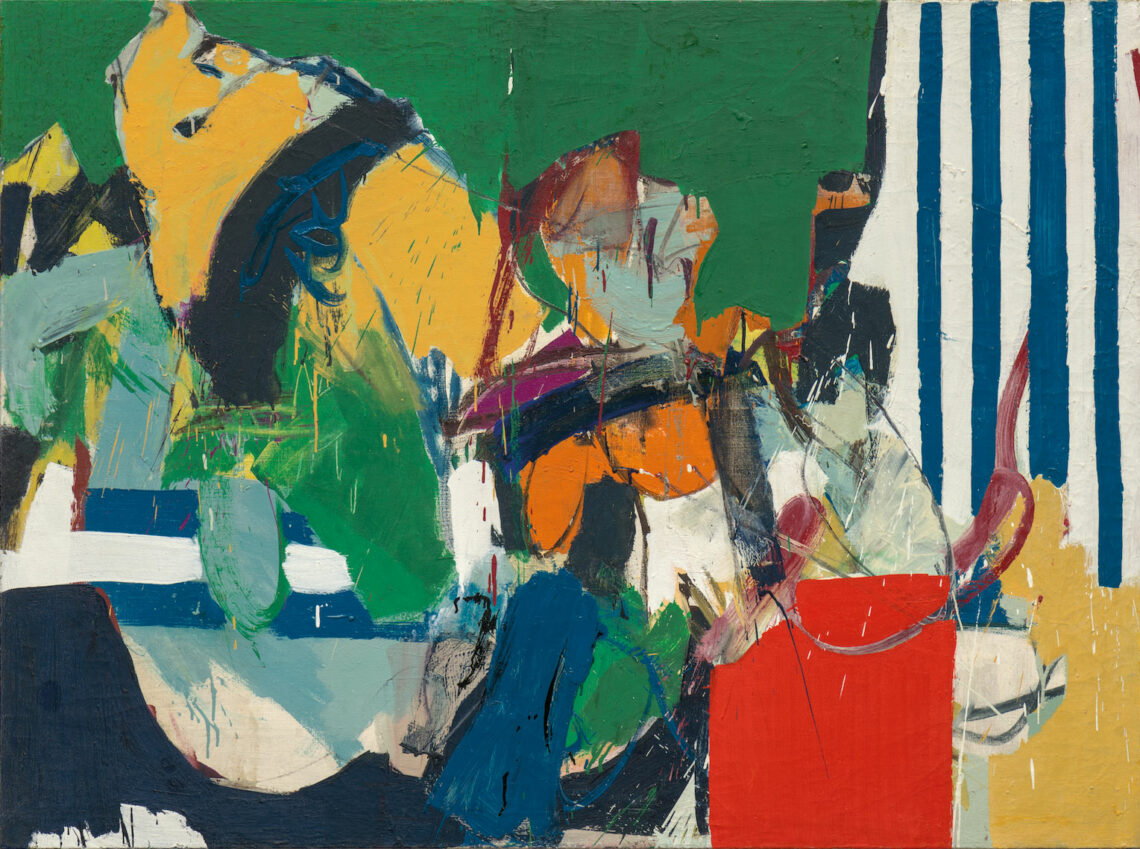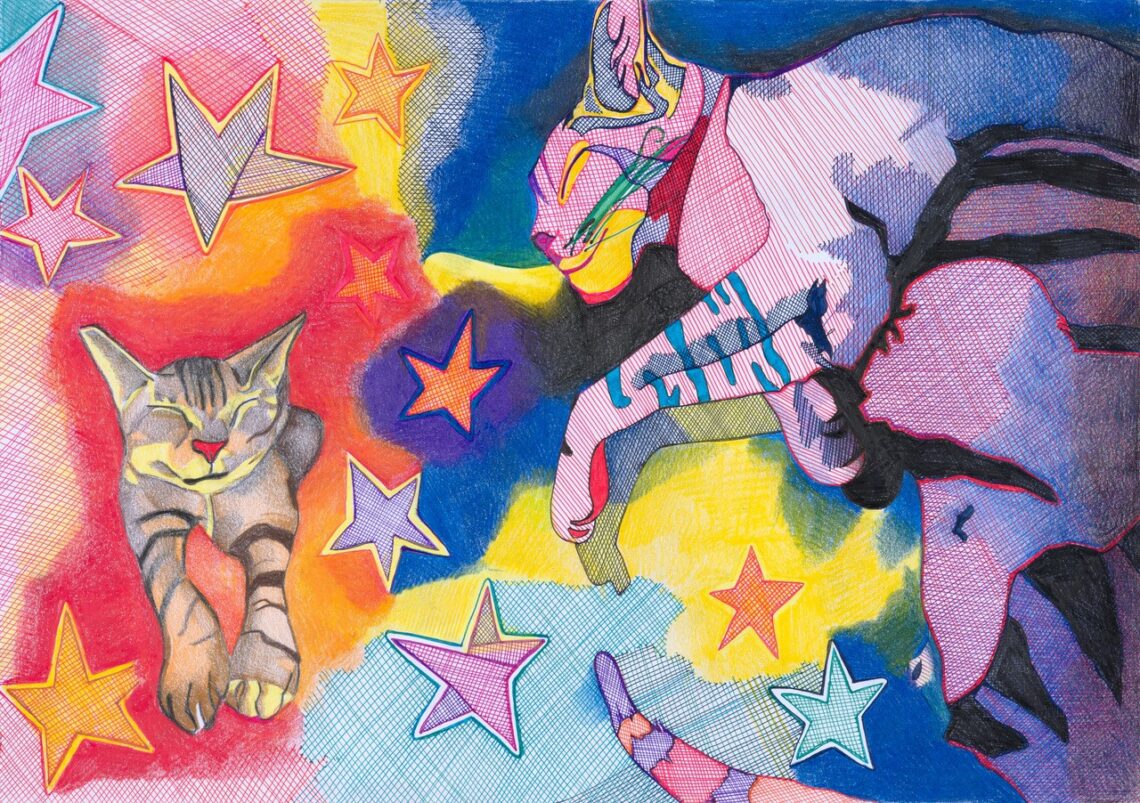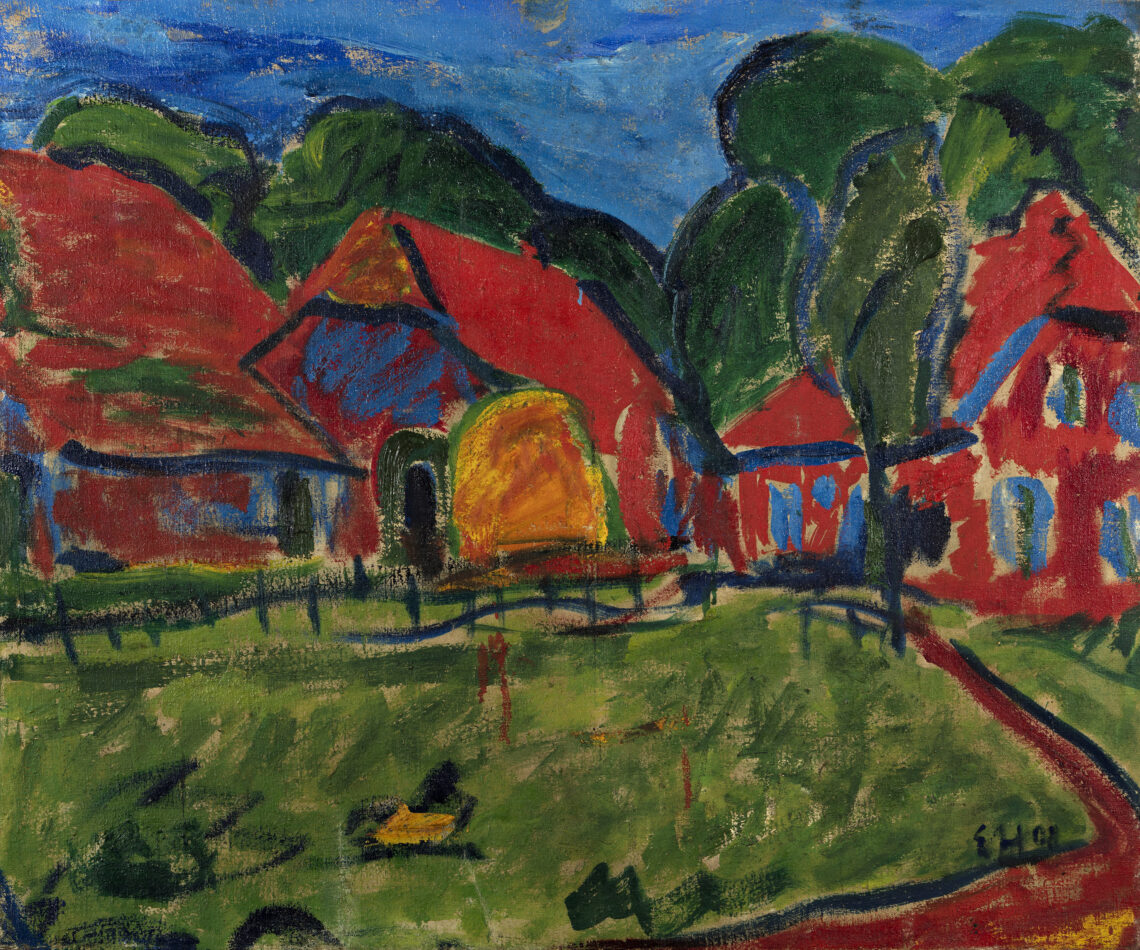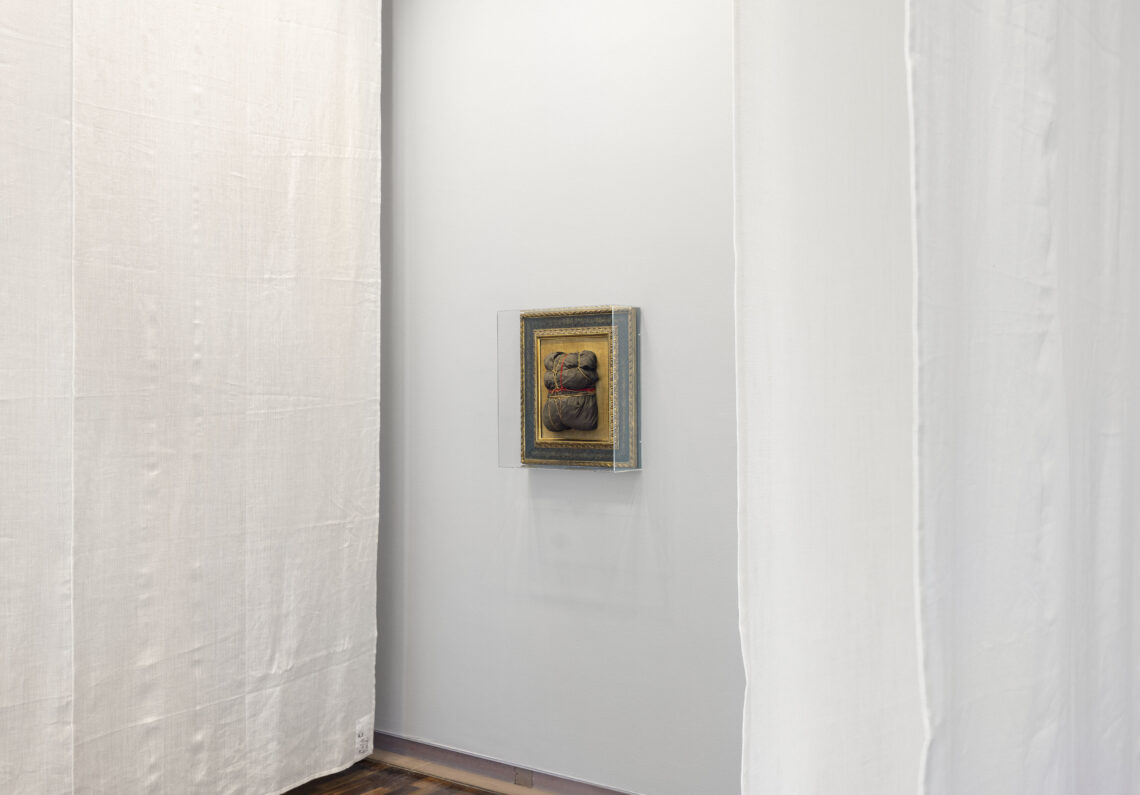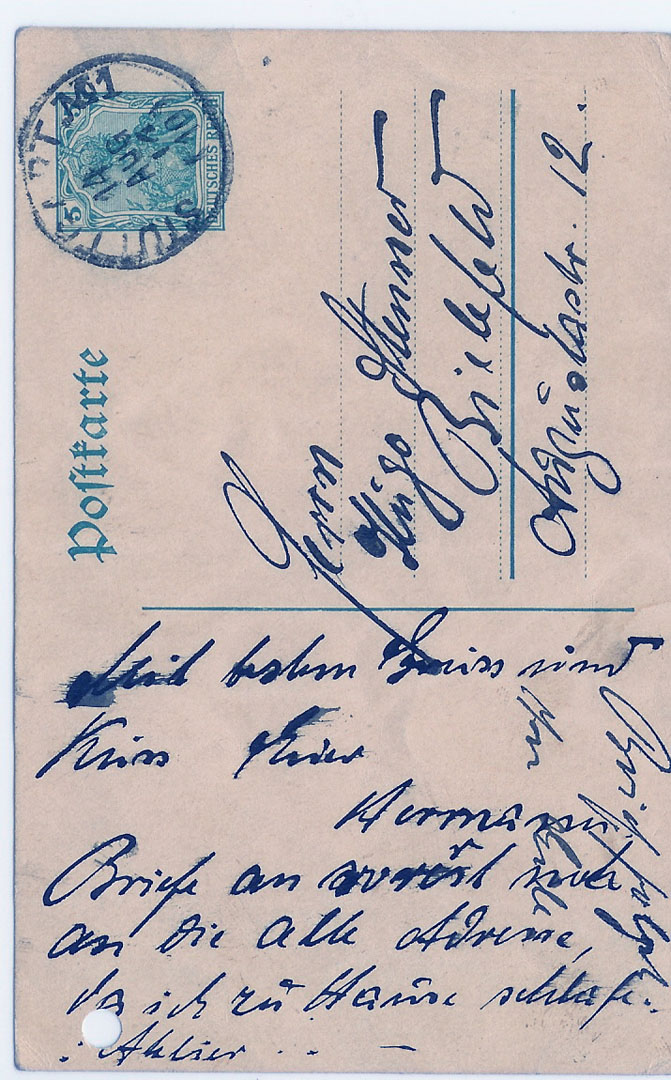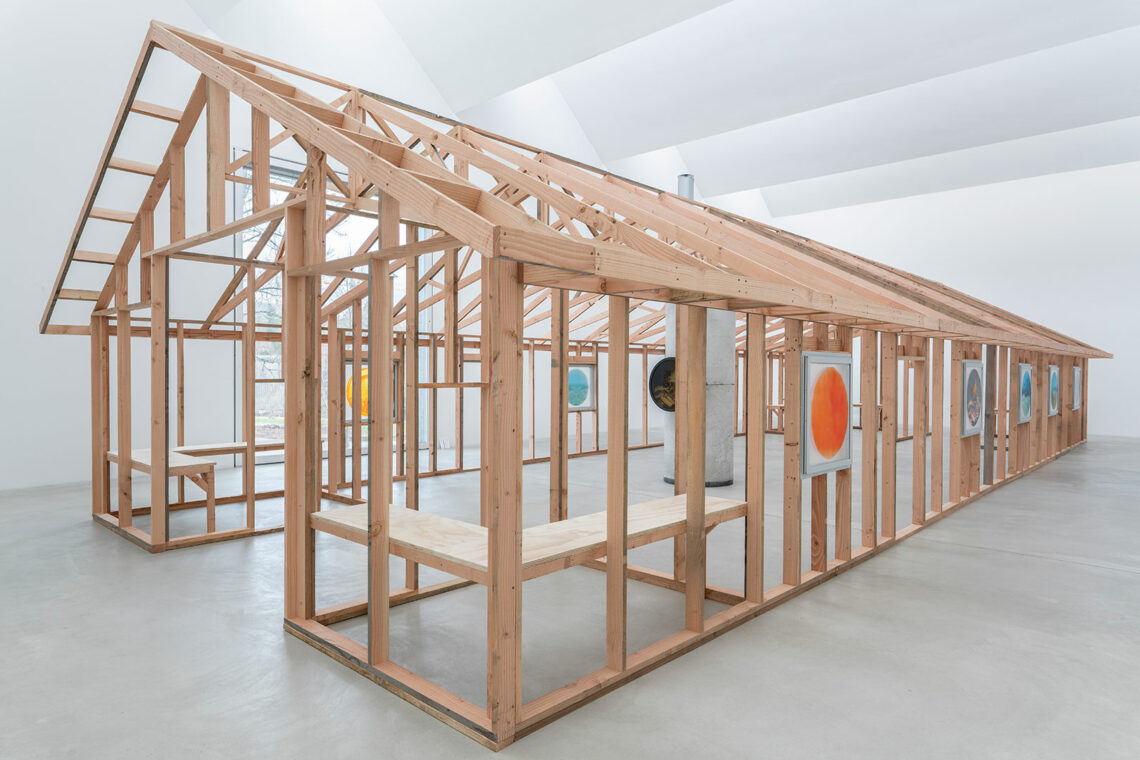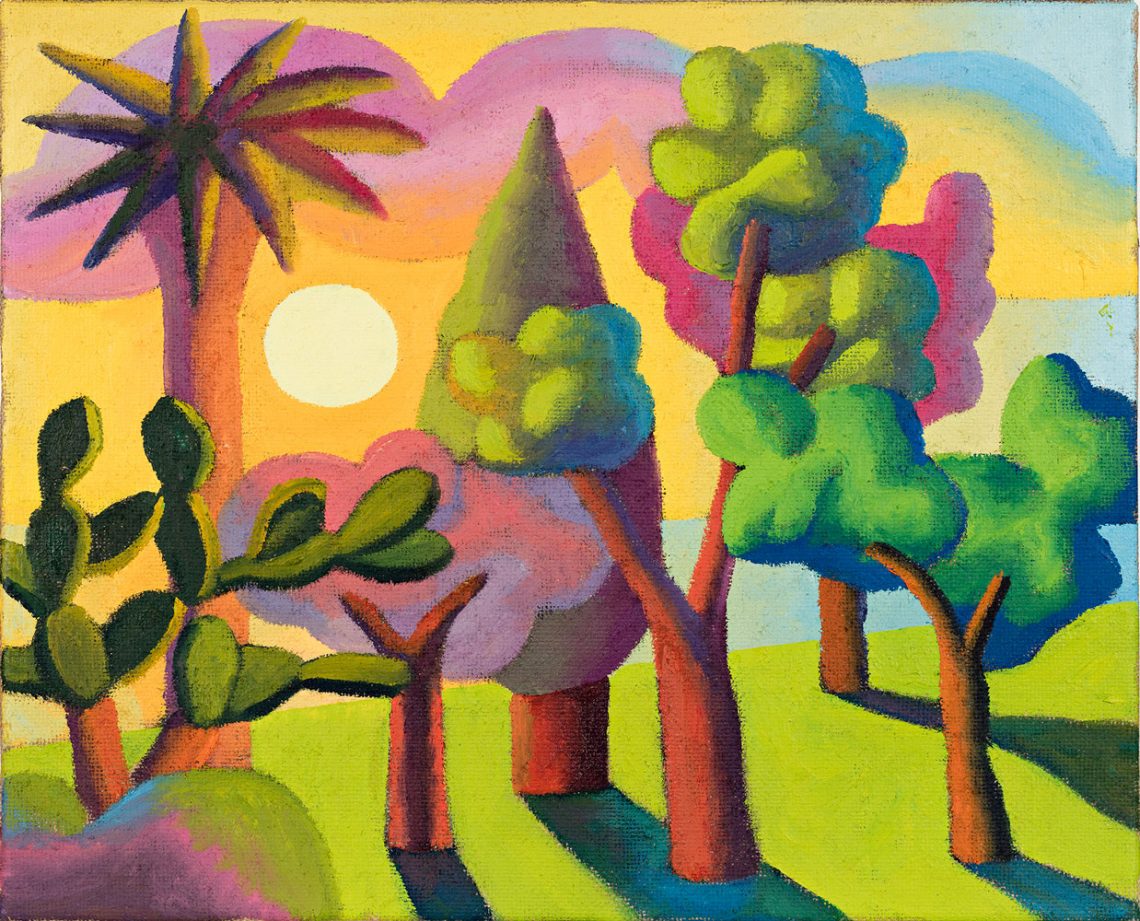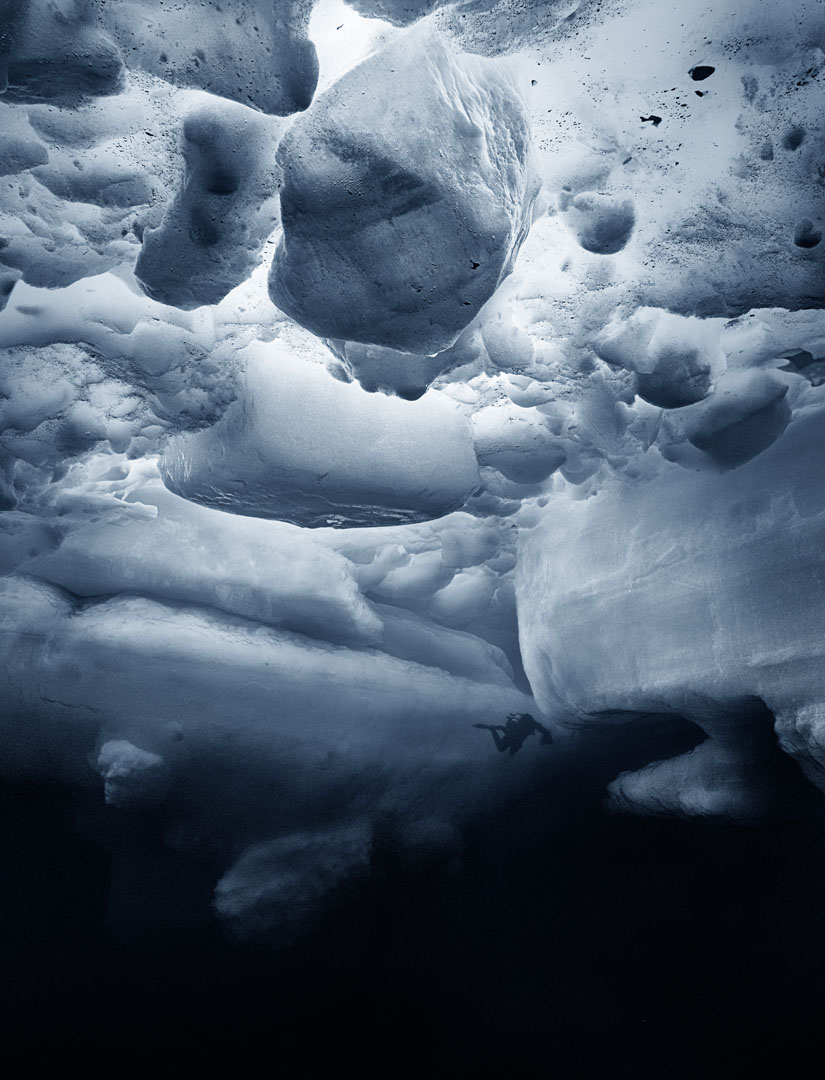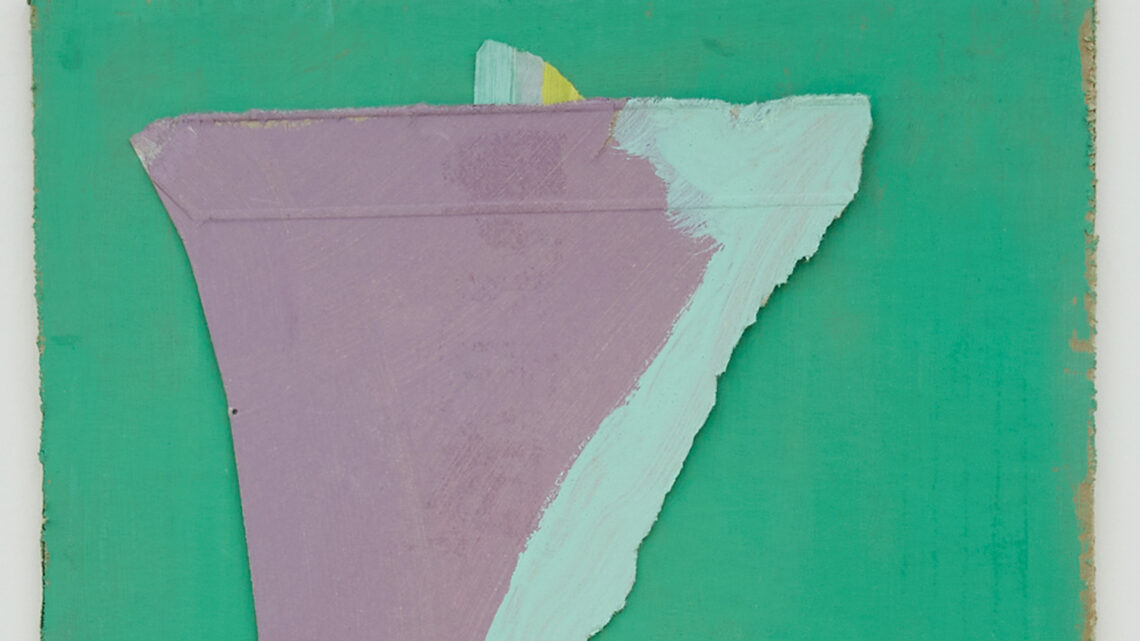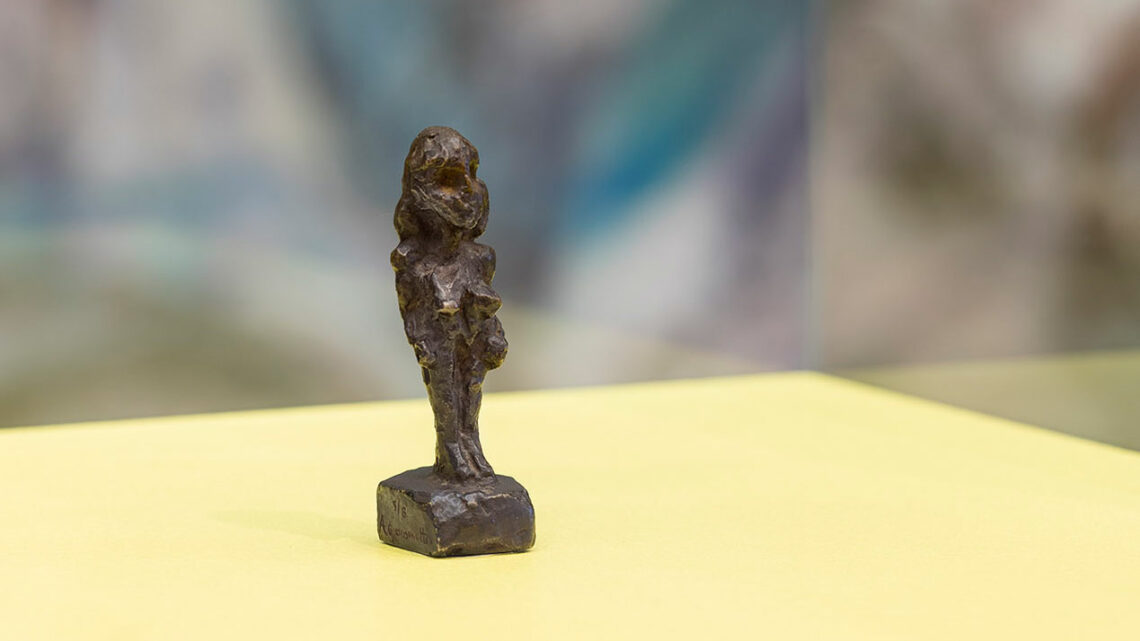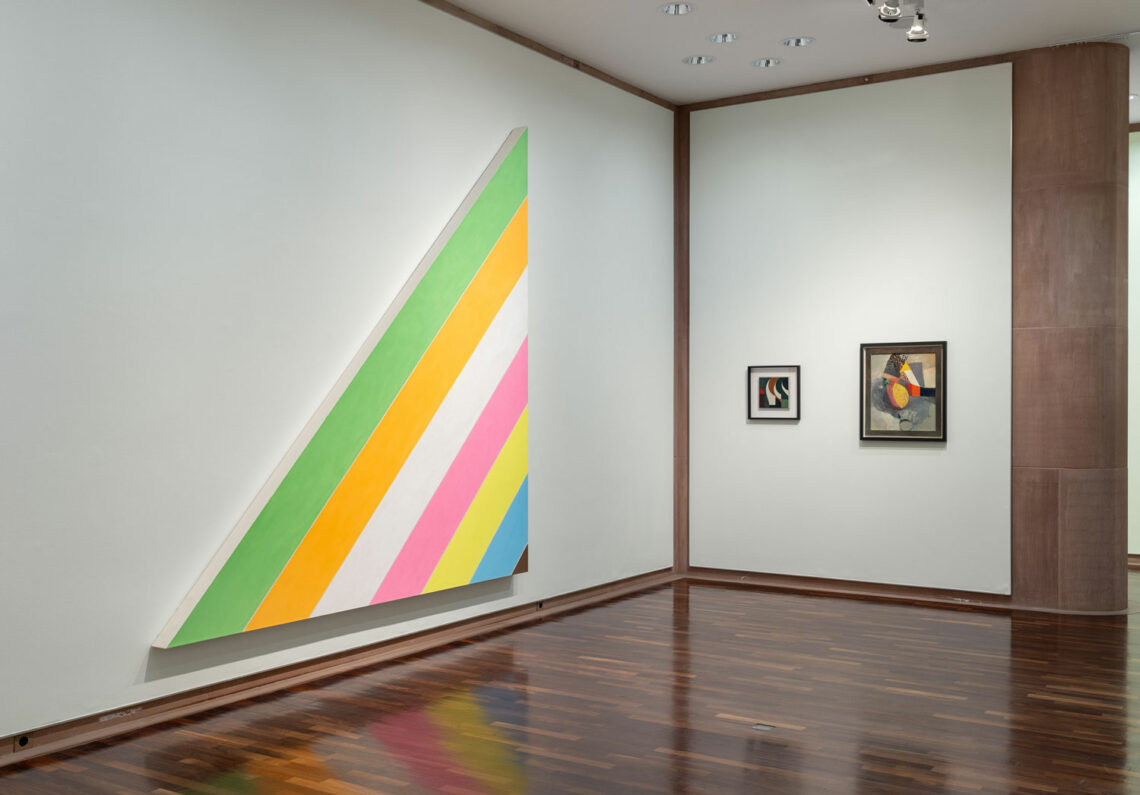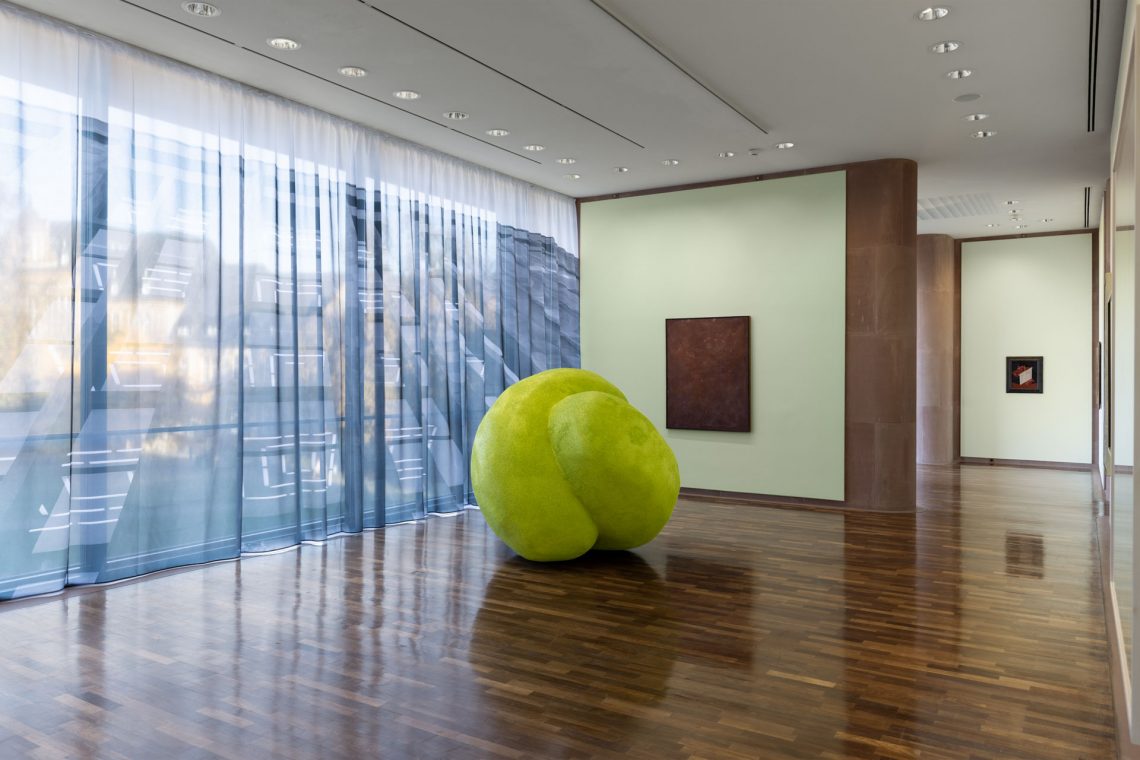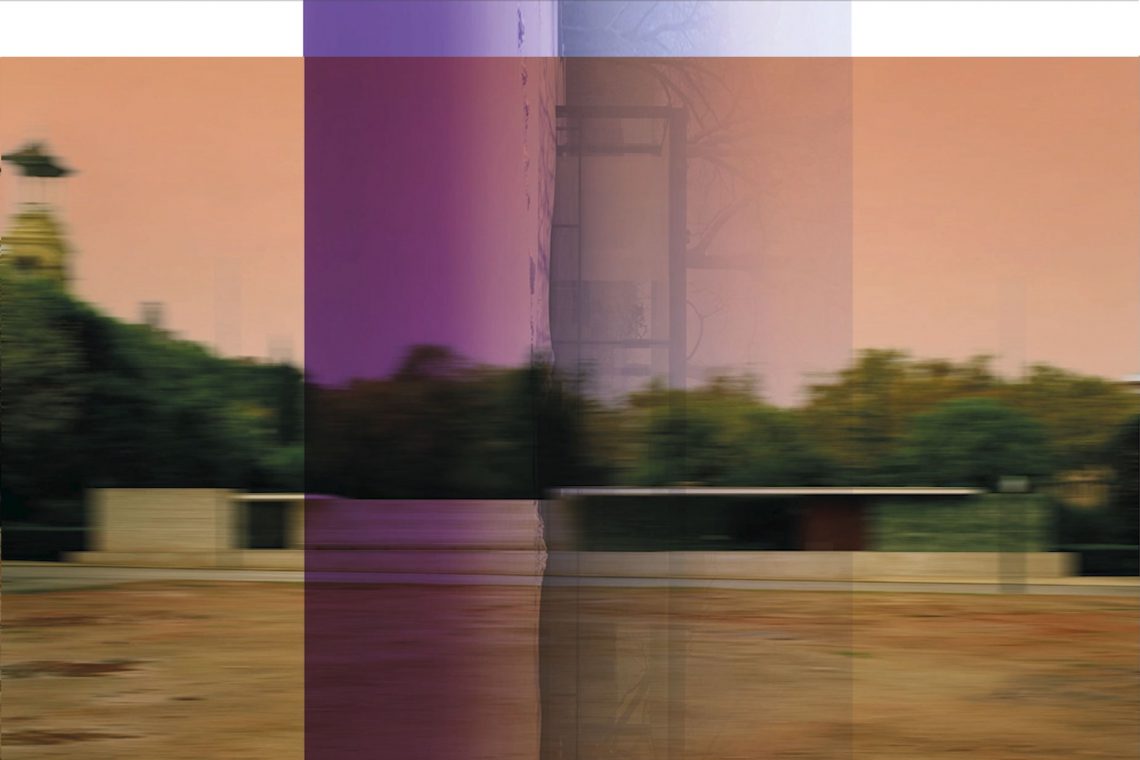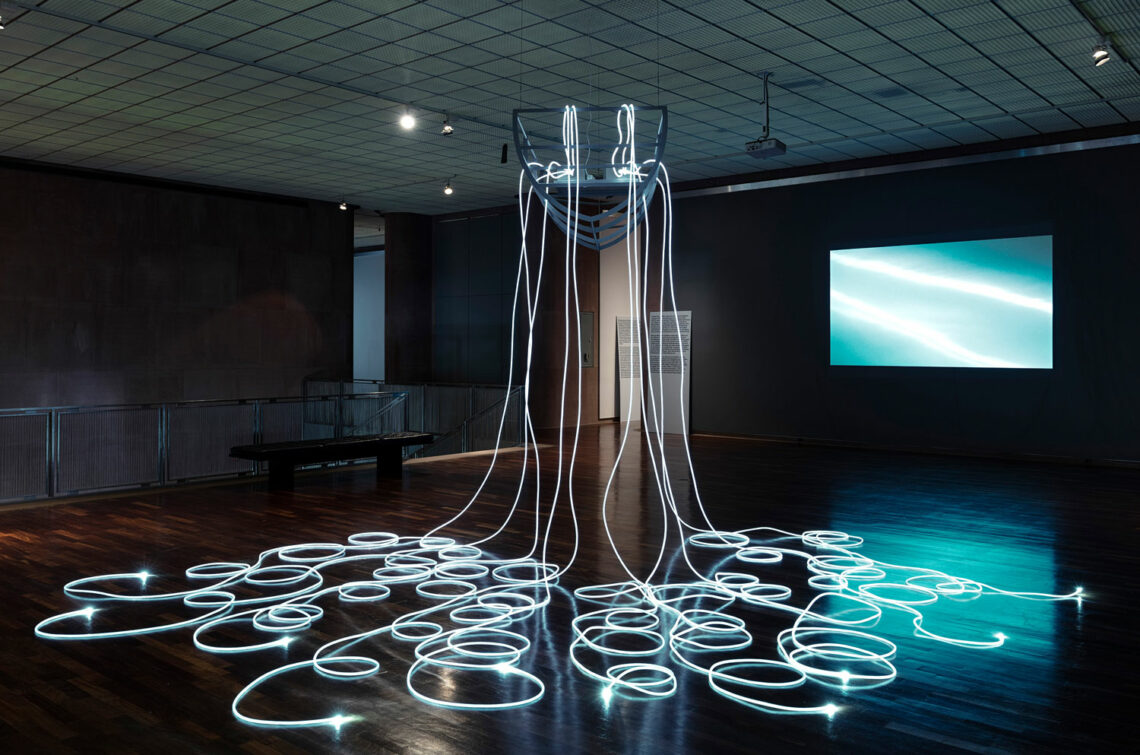Jacoba van Heemskerck
Uncompromisingly modern

In less than two decades, Jacoba van Heemskerck (1876-1923) created a powerful oeuvre comprising paintings, woodcuts and glass works. Rhythmic compositions of pictorial space, black outlines and an intensive use of color characterize the Dutch artist’s expressive landscape, city and harbor motifs.
Van Heemskerck’s turn towards anthroposophy sets her apart from other protagonists of Expressionism. For her, art is not only an expression of subjective perception, but also a path to knowledge, above all through the elementary effect of light and color on the viewer. The luminosity and increasing transparency of her works make this clear. Applied art was no less important to her than painting; on the contrary, at the end of her life van Heemskerck realized her striving for “luminously spiritual” colors in glass art.
The exhibition shows around 60 works from all creative phases: Paintings, drawings, woodcuts, glass works and mosaics. They range from a figurative, strictly rhythmic formal language to an organic, flowing abstraction.
After deciding to become an artist, the Dutchwoman initially worked with the painter Piet Mondrian. She exhibits in Amsterdam, Domburg, Brussels and Paris with her predominantly male colleagues. From 1913 to 1923, she was part of Herwarth Walden’s avant-garde “Sturm” movement in Berlin, where she was one of the most frequently exhibited positions. The renowned gallery owner and publisher also made artists such as Franz Marc, Wassily Kandinsky, Gabriele Münter and Alexej Jawlensky famous.
Van Heemskerck’s search for spirituality and her rejection of an understanding of nature and the cosmos determined purely by materialism and positivism make her work highly topical today, when we are once again called upon to see the complex interrelationships in the world as a whole under different circumstances.
Curator: Dr. Henrike Mund
The exhibition was created in cooperation with the Kunstmuseum Den Haag, the Stade Museums and the Edwin Scharff Museum Neu-Ulm. It is under the patronage of H.E. Wepke Kingma, Ambassador of the Kingdom of the Netherlands to Germany.
The exhibition is sponsored by the Kulturstiftung pro Bielefeld and the Kingdom of the Netherlands.
The accompanying exhibition catalog (Hirmer Verlag) is sponsored by the Ernst von Siemens Kunststiftung.
Gallerie


